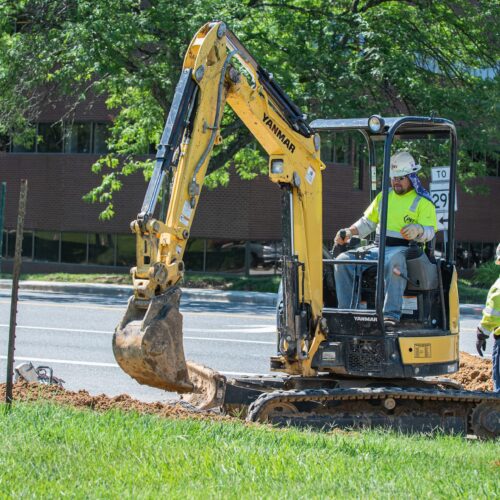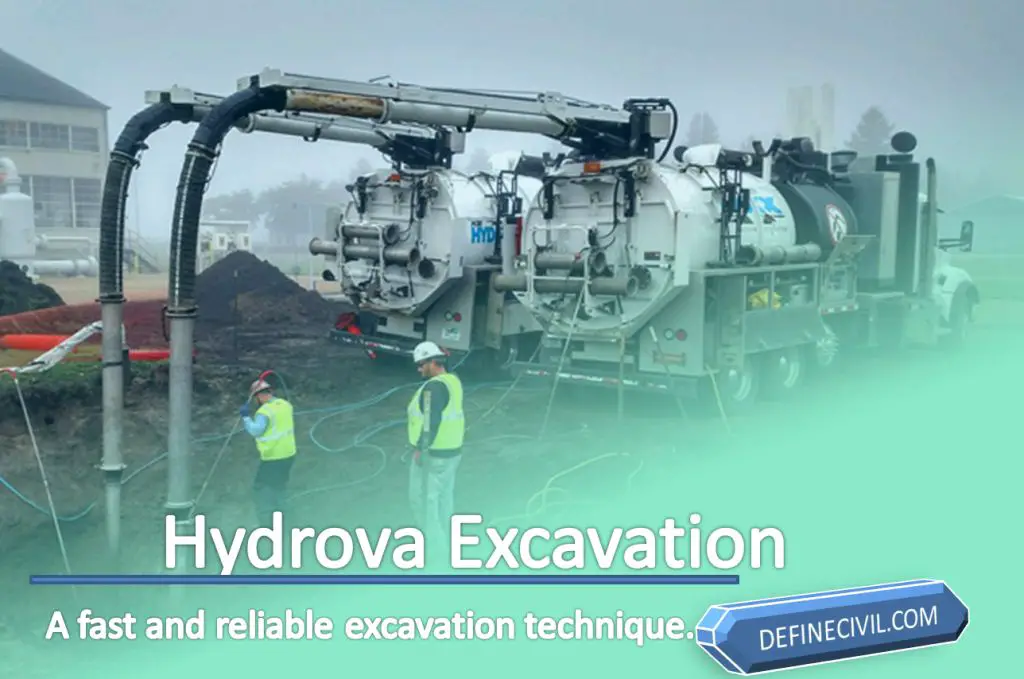The 6-Second Trick For General Contractor
Wiki Article
Not known Factual Statements About Excavating Contractors
Table of ContentsThe 20-Second Trick For General ContractorThe Of DemolitionSome Known Facts About Excavator.Everything about General ContractorAn Unbiased View of Excavation Contractors Near Me


Scrapers or Pans excavate soil in one area, haul and discard the dirt in an additional place (mini excavator). It is difficult to match the effectiveness of scrapes for cut/fill soil operation if the haul range is less after that a mile. Scrapers are generally drawn by a rubber tire wheel tractor and are occasionally pushed with the cut location by an excavator.
There are lot of times that scrapes are not utilized for website grading and also a dump vehicle is utilized: the haul might be to long, the haul might cross roads where scrapers are not allowed, tough rock might be come across, equipment schedule, etc. Unload trucks remain in common usage as well as possibly need little conversation.
Many trucks have a top-hinged tailgate that can not unload any kind of rock broader then the tailgate width. "Rock body" beds, on the various other hand, have no tailgates and also can discard any type of size rock, although their volume ability is reduced. These internet links reveal tools specs for a number of usual dump trucks. Compaction Equipment boosts the density of the soil as well as in some instances gives a smooth, rolled surface.
Getting The Grading Contractors To Work
From a basic test pit to percussion exploration to core boring the owner has significantly extra pricey options that generate significantly much better data about the site underground. As an example, the Proprietor on a 100,000 SF structure task might authorize twenty dull places with split spoon dirt examples taken until rock is reached and after that core examples of rock.Knowing the type and also high quality of rock (from the core examples) as well as place of rock (from the soils boring) is a real advantage in jobsite preparation. On the other hand, the Proprietor of a 100,000 SF structure may determine to wage no geotechnical screening whatsoever. The choice concerning geotechnical testing is normally made by a Proprietor with no input from the Construction Supervisor.
A knowledge of the approximate place of the rock assists the Construction Supervisor to intend the series of steps adhering to rock excavation. If rock is in one corner of a large building project, for instance, the planet excavation might begin at the opposite end of the building in order to begin foundation work soonest.
Beginning the structure job early would be a good concept if the rock might be eliminated by ripping. Nonetheless, if the rock is very tough and needs considerable blasting, it may be prudent to hold structure work till the blasting is completed. The Construction Supervisor ought to collaborate these kinds of decisions and also use all the technical day available.
About Excavation Contractors Near Me
Unclassified excavation states that all rock or various other unforeseen products (omitting unsafe products) encountered in the sitework will be the responsibility of the Professional at no change in agreement cost. An unclassified excavation is simpler from a book-keeping perspective and also positions you can check here the responsibility for geotechnical conditions onto the Sitework Specialist.It's impressive what a hefty rain can do to a construction task. Prior to the rain, the site might be dry, heavy tools successfully moving planet, the various other trades smoothly performing their job.
In most areas of the globe, the Building Supervisor need to keep in mind a simple fact: IT WILL CERTAINLY RAINFALL. Excellent preparation can decrease the damage and disruption of a hefty rain to a jobsite. Typically the excavation as my site well as grading is delegated the Sitework Service Provider (as well as their Foremen is responsible to monitor and also route the heavy equipment as well as operators).
The Building Manager need to be continually aware of what rainfall will do to the project website. It is not unusual for the Sitework Supervisor to work their hefty devices for maximum effectiveness as well as hope it doesn't rain. Among the most effective means to prepare for rain is to slope all qualities to drain and to smooth rolled the surface area prior to a rain.
The Ultimate Guide To Demolition
The Building and construction Supervisor have to be perceptive adequate to insure that hefty rain does not quit working on the task longer than needed. Daily conversations with Sitework Foremen might be called for to attain this objective. Whenever excavation is needed below the existing groundwater level on a task, the process of dewatering need to be thought about.In a genuinely natural soil, the water takes a trip so slowly via the clay or silt that dewatering is not generally required for the fairly short time of excavation. Dewatering might be needed for a single footing excavation or for a whole task website. The most their website common dewatering techniques are trench drains pipes, deep wells and well points.

Ground water infiltration can likewise be lowered by cutoff approaches such as sheet piling. High dewatering expenses have actually paled the revenue margins on much too numerous tasks.
This alternative should constantly be taken into consideration when evaluating the possibility of dewatering. Undoubtedly the choice is only viable if gravity can run the water to reduced ground. Trench drains pipes can be reduced with a backhoe and also loaded with a crude, granular product (# 4 stone as an example), but care should be worked out in choosing the water electrical outlet kind and also place.
Grading Contractors Fundamentals Explained
A siphon, necessarily, uses air pressure to carry water from one elevation, up over a barrier, to a reduced altitude. The pipes in a siphon system need to be airtight and some ingenuity is commonly called for to completely fill up the siphon pipeline. The siphon pipeline need to be complete for the siphon to start.A deep well includes a pump, hose and an upright well casing. The pump consumption is at the base of the well housing (normally some crushed stone is put there as a filter tool) (general contractor). The water is pumped up the tube, out of the well casing, and to an ideal discharge area.
In a crude sand, for instance, a big area can be pumped to near the pump intake elevation. A less permeable dirt, on the other hand, reduces the effectiveness of a deep well. Given that the pump is usually at the end of the deep well, there are no height limitations as a result of vacuum lift, as well as deep wells can decrease the groundwater over 50 feet.
On the bottom of the wellpoint there is a 2 foot long screen as well as valve, water jets out of this shutoff and also produces an opening into which the wellpoint pipe can be reduced. This hole is frequently made a bigger diameter (for instance 10 inches) to permit a coarse sand backfill to help filter the water (excavator).
Report this wiki page